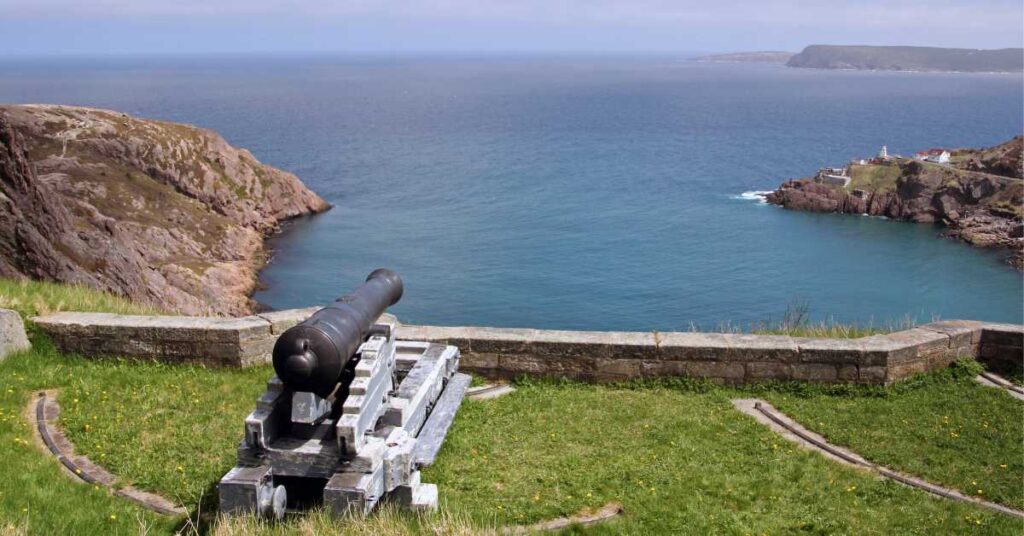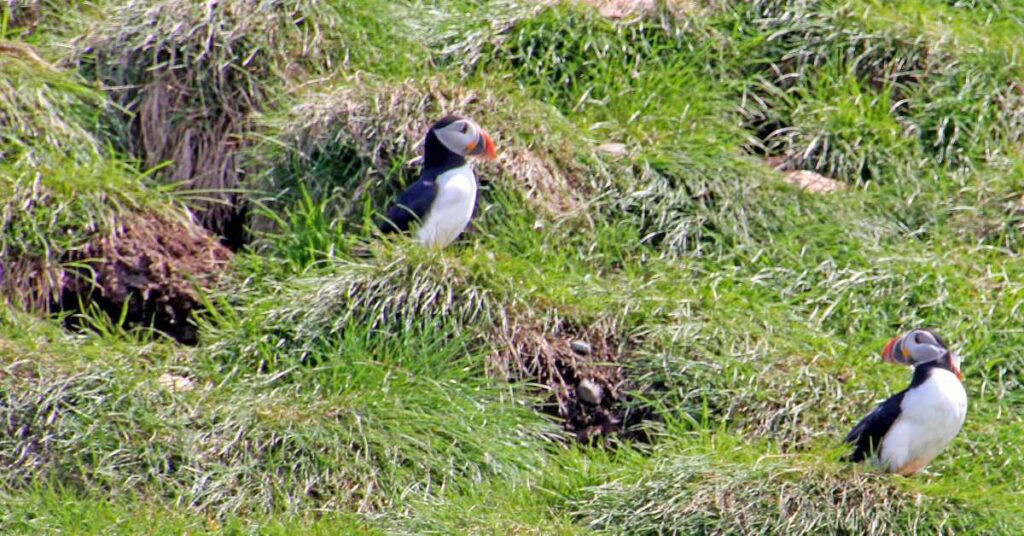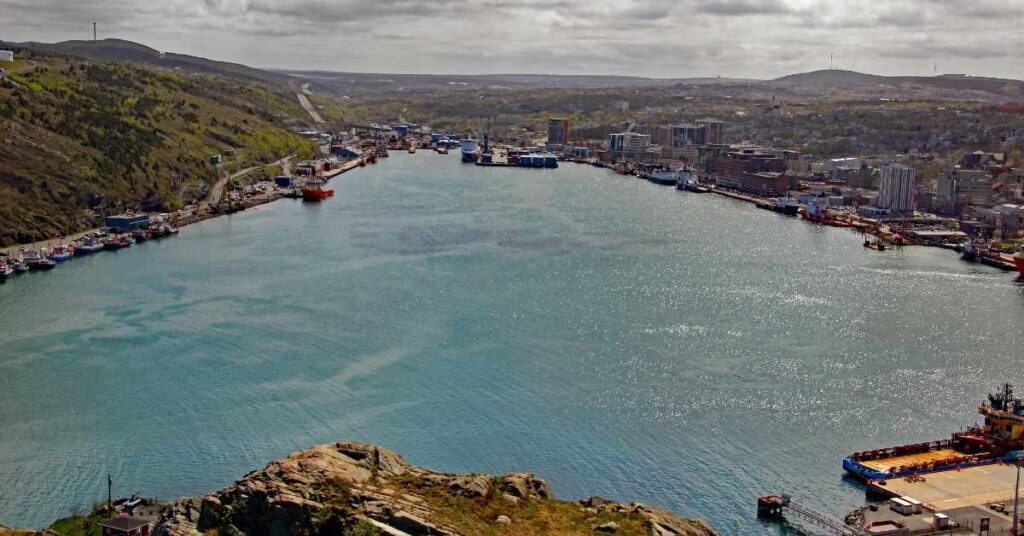St. John’s, Newfoundland: Out and About in Town
St. John’s, Newfoundland: out and about in town St. John’s, Newfoundland, is the oldest city in North America. It’s farthest east, unless you count towns in Greenland. There have been ships in the harbor since the 1500s, probably earlier. The port was critical to North Atlantic convoys in World War II. Along with enjoying Newfoundland’s rugged beauty, there’s plenty to learn by staying a while in St. John’s. The Murray Premises Hotel is a National Historic Site on the waterfront, former warehouses that survived the great fires that you’ll learn about when you go. That sounded like a great reason to stay there. I found it to be a modern hotel that retains the character of its warehouse days, with old warehouse beams left visible. Some of the creaks are still there, too. Importantly to me, my room rate included breakfast, available only steps across a small second floor lobby from my room. The coffee and food choices were good, the staff congenial, and the room cozy. So even if it was a rainy cold day, which it was about half the time, I was fortified and ready. Most of the big hotel brands have a mid-range property in St. John’s and there is the usual assortment of B&Bs and vacation rentals. I went on an excursion with some women who were enjoying their stay in a pretty VRBO house up the hill. Good to know: A Lot of Uphill If you walk around St. John’s, you’ll be walking uphill a lot. Downtown St. John’s rises steeply from the harbor. It’s hard work to walk some of the streets, but you can find stairs here and there and footpaths through some neighborhoods. Crossing streets wasn’t bad. Drivers actually stopped without threatening pedestrians in zebra crossings. Still, I looked for quiet crossings with the fewest converging streets. Why tempt drivers coming from five directions, especially when two are downhill? Above all, wear good shoes. Also good to know: the great fires Nineteenth century fires periodically destroyed the congested, wooden city and harbor front. The Great Fire of 1892 destroyed two-thirds of the city and several ships. That fire started in a stable (does this remind anyone of the Chicago fire?) and burned most of downtown. Down on the harbor, the Murray Premises survived, as did the Catholic (now) Basilica of St. John the Baptist on top of the hill. Government buildings that were farther uphill beyond an undeveloped area survived. Guarding the harbor The Great Fire of 1892 figures into a lot of conversations today. Signs and plaques describe what was rebuilt after the fire and what survived. I walked uphill just about to the corner where the 1892 fire started, but didn’t see much except an ordinary street of small buildings. Not sure what I expected to see since there’s been plenty of time to rebuild. The Rooms – The Provincial Museum Don’t neglect The Rooms. Exhibits cover the diverse human and natural history of Newfoundland and Labrador, a unique, faraway, big place. There’s a lot for visitors to learn. I was going to miss the summer activities that were just about to get started, but I did get a feeling for the province in this modern, open building. I saved a visit to The Rooms for a rainy day and started at the top floor, working my way down. One special exhibition along with a series of events in 2016 commemorates the centennial of the World War I battle of Beaumont-Hamel. It was brutal, devastating, bloody. The Newfoundland Regiment was almost wiped out. When roll call was taken, only 68 men answered their names – 324 were killed, or missing and presumed dead and 386 were wounded. So many from a small place touched every family. The event is embedded in the province’s consciousness. As you look at the soldiers’ and nurses’ pictures, you see they look just like us. Not old fashioned. That’s just the clothes and maybe the haircuts. Look at their faces and think how appalling it all is. St John’s harbor Touring Around on Foot – Signal Hill and Quidi Vidi Village I was equipped with my list from TripAdvisor and eventually got maps of self-guided walking tours from the Visitor Center. My first day in St. John’s was sunny and I set out for Signal Hill, my longest walk and highest elevation. Signal Hill is on top of the cliffs that guard the north side of the harbor entrance. From Signal Hill you see clearly how narrow the entrance to St. John’s harbor is. Hence the entrance is called the Narrows. Makes sense. You can take a trail along the cliff face, or use sidewalks. I opted for sidewalks. Well, half way there I thought I was going to croak. And when I was sure I was almost there, I crested a hill and saw the rest of the climb ahead. So think about how you get there. Taxis and excursions are available. But if you’re game, try the cliffside trail, which I am sure is much more beautiful that the sidewalks. A woman at hotel reception told me that part of the trail is a narrow ledge with the water below. “But there’s a chain you can hold onto,” she continued. I decided not. Physically, OK, but mentally, no. Didn’t want to hold onto a chain and pussy-foot along the ledge. However, some nice people from New Jersey I met did that and they were fit and happy the next day. Now I’m sorry I didn’t try it. Colorful houses line the hillside Once on Signal Hill the views of the ocean and harbor are stunning. You’re looking out there into the North Atlantic, and you can feel that northern-ness. Cabot Tower on the hill offers a gift shop and small museum celebrating the earliest days of the wireless telegraph. Another first – St. John’s is where Italian inventor Guglielmo Marconi received the first transatlantic telegraph signal. Part way back down, there’s
St. John’s, Newfoundland: Out and About in Town Read More »



